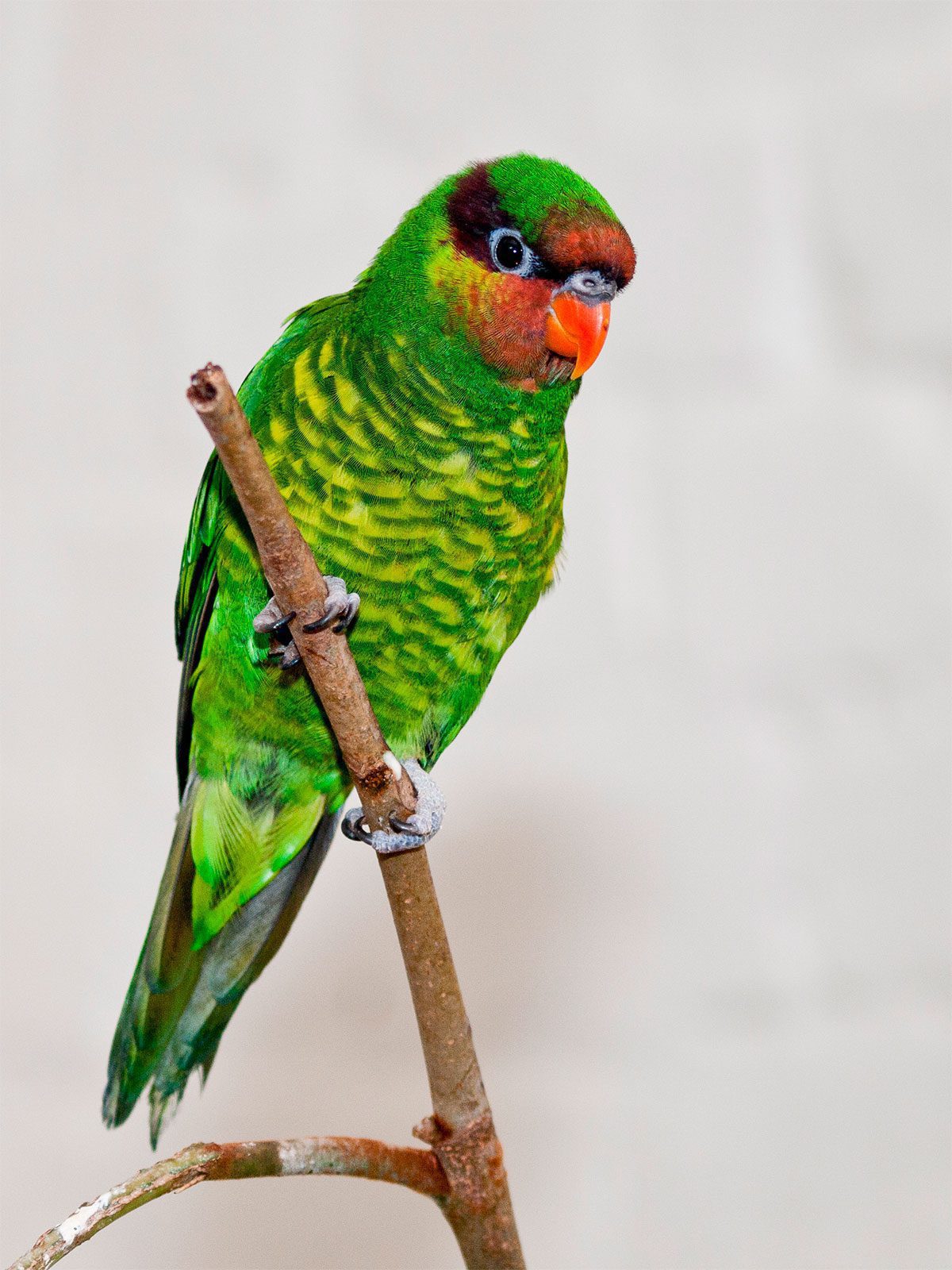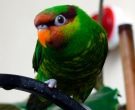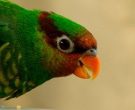Content |
|---|
Description
20 cm.. length and a weight between 48 and 62 gr.
The plumage of the Mindanao Lorikeet (Trichoglossus johnstoniae) is usually Green. The facial area It is red with a tendency to pink. The band that goes from the eye until the part back from the neck it is dark purple.
The underparts are yellow, scalloped with green resembling scales. They have the Underwing coverts and subcaudales yellowish green. The band less of them wings is yellow. Its bill is reddish orange, the legs grayscale and the eye ring dark gray. The eyes orange-red.
The birds immatures have less red on the face. Instead of the band dark purple in adults, young birds have an off color lilac and a Brown stain behind the eye. The rings of the eyes are of color grey white. The eyes They are brown.
There are no significant differences between males and females.
- Sound of the Mindanao Lorikeet.
Habitat:
Found of 1.000 to 2.500 m in the Mount Apo and 1.000 1,700 m in the Mount Malindang.
The Mindanao Lorikeet they prefer mossy forests, but also you can see them along the edge of the forest and in degraded areas.
Usually noisy during the flight, but when they feed on, remain calm. They migrate daily between different altitudes in the morning looking for food in the Highlands and in the evening return to their resting places in the lower areas.
They move higher during the day, in flocks of up to 50 birds, to feed on trees with flowers and shrubs. At sunset, they return to the lower slopes to rest.
Reproduction:
Little is known about the ecology of reproduction.. Probably it breeding is performed between months of March and may.
Captive breeding records indicate that the laying tends to be of two eggs, the incubation of some three weeks and that the young leave the nest between three weeks and a month more afternoon.
Food:
With feeds nectar, flowers, fruits, pollen and insects.
Distribution:
Size of the area of distribution (reproduction / resident): 8.700 km2
Endemic to the mountains of Mindanao (Philippines)
Conservation:
• Current IUCN Red List category: Near threatened
• Population trend: Decreasing
Its habitat favorite is relatively unlikely that is affected by human activities in the medium term, but logging and capture should remain concerns.
The world population apparently not been quantified formally, but the species is described as very rare and there are those who think that there are less than 10.000 individuals.
"Mindanao Lorikeet" in captivity:
Very rare in captivity.
Due to its decreasing trend in terms of its population, any specimen that can not be returned to their natural habitat (natural range) should preferably be placed in a well-managed breeding program to ensure the survival of the species.
Alternative names:
– Mindanao Lorikeet, Apo Lorikeet, Johnstone’s Lorikeet (ingles).
– Loriquet de Johnstone (French).
– Mindanaolori, Mindanao-Lori (German).
– Loris johnstoniae (Portuguese).
– Lori de Mindanao, Tricogloso de Mindano (español).
scientific classification:
– Order: Psittaciformes
– Family: Psittaculidae
– Genus: Trichoglossus
– Scientific name: Trichoglossus johnstoniae
– Citation: Hartert, 1903
– Protonimo: Trichoglossus johnstoniae
Images “Mindanao Lorikeet”:
————————————————————————————————
“Mindanao Lorikeet” (Trichoglossus johnstoniae)
Sources:
– Avibase
– Parrots of the World – Forshaw Joseph M
– Parrots A Guide to the Parrots of the World – Tony Juniper & Mike Parr
– BirdLife.org
– Photos:
1 – “Trichoglossus johnstoniae - London Zoo, England-8a” by William Warby from London, England – Unknown-Tropical BirdUploaded by Snowmanradio. Licensed under CC BY 2.0 via Wikimedia Commons.
2 – “Mindanao Lorikeet (Trichoglossus johnstoniae)-3c” by Mindanao_Lorikeet_(Trichoglossus_johnstoniae).jpg: Elizabeth Ellisderivative work: Snowmanradio (talk) – originally posted to Flickr as lovebird and uploaded to commons at Mindanao_Lorikeet_(Trichoglossus_johnstoniae).jpg. Licensed under CC BY-SA 2.0 via Wikimedia Commons.
3 – by Jonathan Beilby – IBC.lynxeds.co
4 – zoochat.com
5 – papageien.org
– Sounds: Kennedy, Robert S. – © 2014 Cornell University






